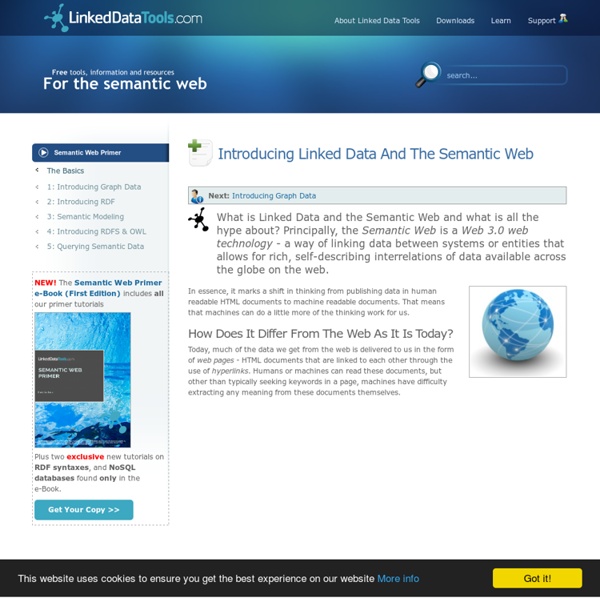R2RML: RDB to RDF Mapping Language
This document describes R2RML, a language for expressing customized mappings from relational databases to RDF datasets. Such mappings provide the ability to view existing relational data in the RDF data model, expressed in a structure and target vocabulary of the mapping author's choice. R2RML mappings are themselves RDF graphs and written down in Turtle syntax. 1 Introduction This specification describes R2RML, a language for expressing customized mappings from relational databases to RDF datasets. This specification has a companion that defines a direct mapping from relational databases to RDF [DM]. Every R2RML mapping is tailored to a specific database schema and target vocabulary. R2RML mappings are themselves expressed as RDF graphs and written down in Turtle syntax [TURTLE]. The intended audience of this specification is implementors of software that generates or processes R2RML mapping documents, as well as mapping authors looking for a reference to the R2RML language constructs.
s Python Class - Educational Materials
Welcome to Google's Python Class -- this is a free class for people with a little bit of programming experience who want to learn Python. The class includes written materials, lecture videos, and lots of code exercises to practice Python coding. These materials are used within Google to introduce Python to people who have just a little programming experience. To get started, the Python sections are linked at the left -- Python Set Up to get Python installed on your machine, Python Introduction for an introduction to the language, and then Python Strings starts the coding material, leading to the first exercise. This material was created by Nick Parlante working in the engEDU group at Google. Tip: Check out the Python Google Code University Forum to ask and answer questions.
A Direct Mapping of Relational Data to RDF
Status of this Document This section describes the status of this document at the time of its publication. Other documents may supersede this document. A list of current W3C publications and the latest revision of this technical report can be found in the W3C technical reports index at This is a Public Working Draft of the "A Direct Mapping of Relational Data to RDF" for review by W3C members and other interested parties. This document was developed by the W3C RDB2RDF Working Group. Comments on this document should be sent to public-rdb2rdf-comments@w3.org, a mailing list with a public archive. Publication as a Working Draft does not imply endorsement by the W3C Membership. This document was produced by a group operating under the 5 February 2004 W3C Patent Policy. 1 Introduction Strategies for mapping relational data to RDF abound. The Direct Mapping is intended to provide a default behavior for R2RML: RDB to RDF Mapping Language. 2.1 Direct Mapping Example
Google Developers
This morning we welcomed 6,000 developers to our 7th annual Google I/O developer conference. The crowd in San Francisco was joined by millions more watching on the livestream and 597 I/O Extended events, in 90+ countries on six continents. We're meeting at an exciting time for Google, and for our developer community. There are now one billion of you around the world who use an Android device. One billion. Today, developers got a preview of our most ambitious Android release yet. But, beyond the mobile phone, many of us are increasingly surrounded by a range of screens throughout the day--at home, at work, in the car, or even on our wrist. For more information visit Watch all Google I/O 2014 videos at: g.co/io14videos Show less
RDF Vocabulary Description Language 1.0: RDF Schema
Abstract The Resource Description Framework (RDF) is a general-purpose language for representing information in the Web. This specification describes how to use RDF to describe RDF vocabularies. This specification defines a vocabulary for this purpose and defines other built-in RDF vocabulary initially specified in the RDF Model and Syntax Specification. Contents 1. 1. The Resource Description Framework (RDF) is a general-purpose language for representing information in the Web. This specification is one of several [RDF-PRIMER] [RDF-SYNTAX] [RDF-CONCEPTS] [RDF-SEMANTICS] [RDF-TESTS] related to RDF. This specification introduces RDF's vocabulary description language, RDF Schema. This document is intended to provide a clear specification of the RDF vocabulary description language to those who find the formal semantics specification, RDF Semantics [RDF-SEMANTICS] daunting. This document does not specify a vocabulary of descriptive properties such as "author". 2. 2.1 rdfs:Resource 3. The triple
Node.js
Node.js is an open source, cross-platform runtime environment for server-side and networking applications. Node.js applications are written in JavaScript, and can be run within the Node.js runtime on OS X, Microsoft Windows, Linux, FreeBSD, NonStop and IBM i. Node.js provides an event-driven architecture and a non-blocking I/O API that optimizes an application's throughput and scalability. Node.js is gaining adoption as a server-side platform[4] and is used by Microsoft,[5][6] Yahoo! History[edit] Ryan Dahl, creator of Node.js Node.js was invented in 2009 by Ryan Dahl, and other developers working at Joyent.[17] Node.js was created and first published for Linux use in 2009. Dahl was inspired to create Node.js after seeing a file upload progress bar on Flickr. In June 2011, Microsoft partnered with Joyent to implement a native Windows version of Node.js.[23] The first Node.js build to support Windows was released in July. In January 2014, Schlueter announced Timothy J. Overview[edit] V8[edit]
FREE Computer Training - Computer Repair Classes - Laptop Repair Instruction - Data Recovery Lessons - Web Design Seminars - Computer Security Counseling
Harvard Extension School's Computer Science E-75: Building Dynamic Websites by David J. Malan



